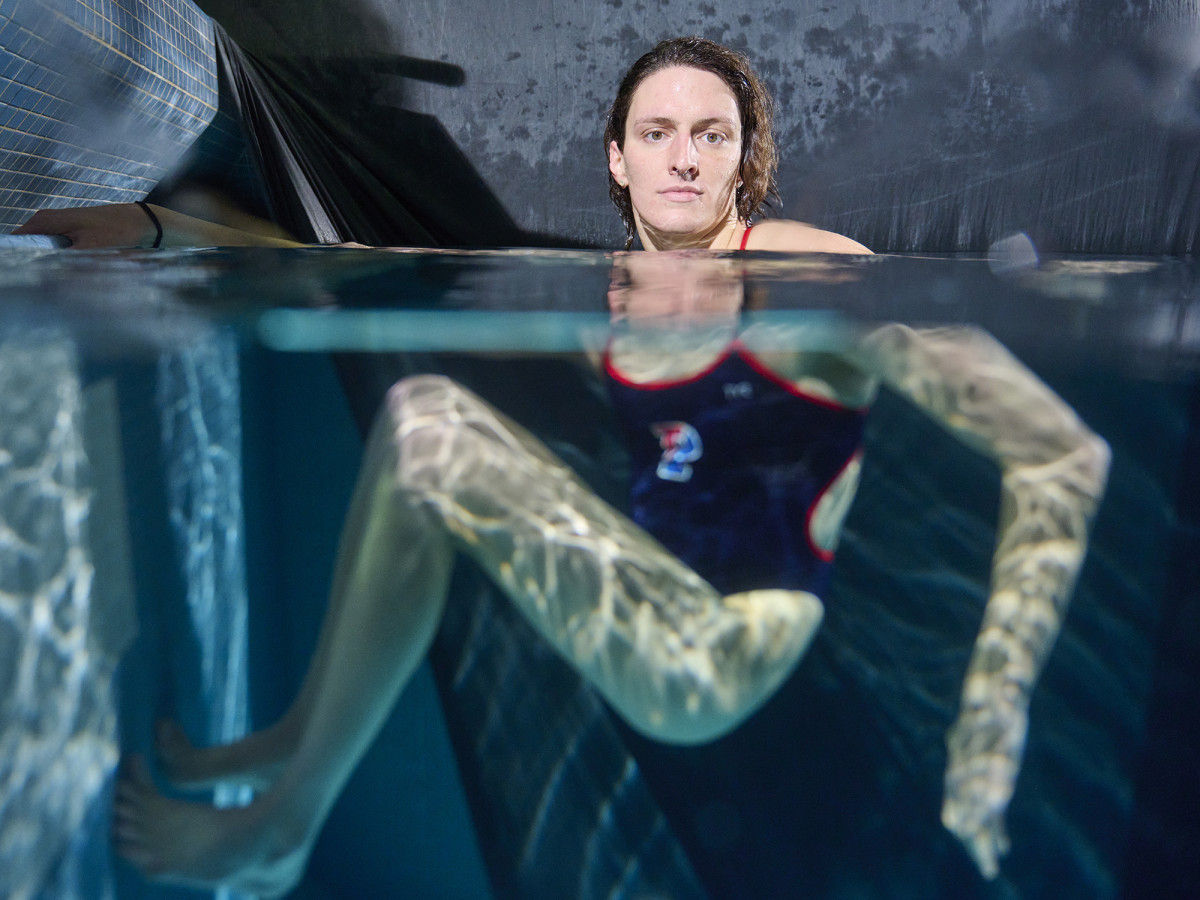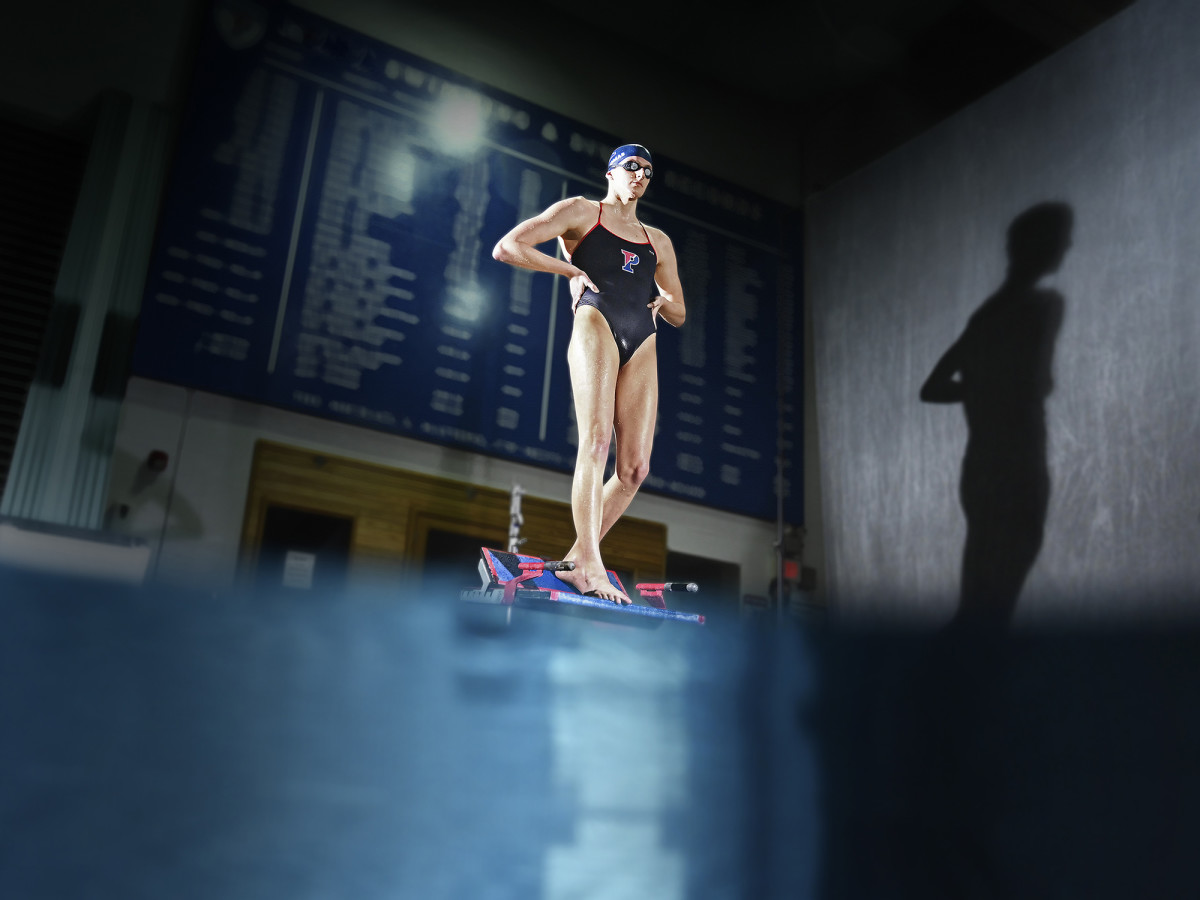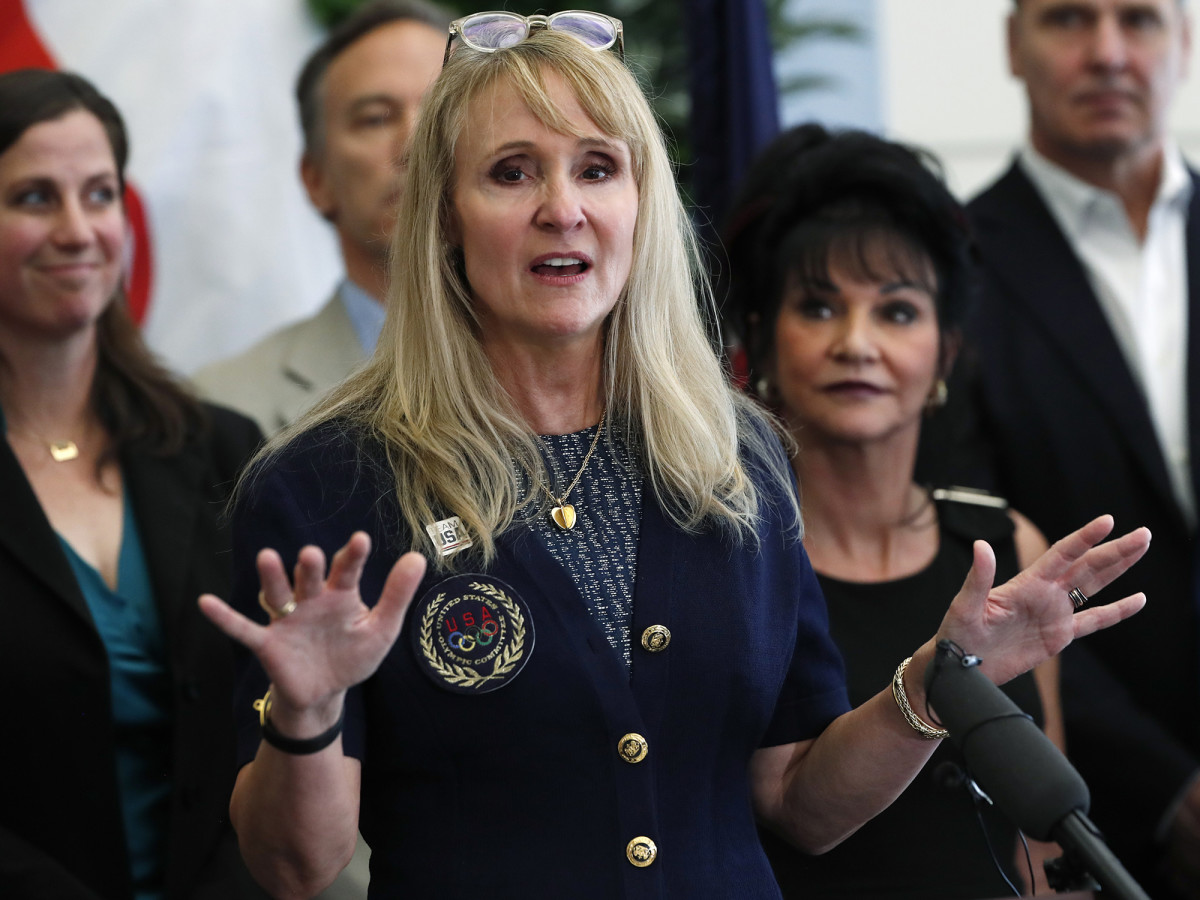Understanding the Different Rules and Policies for Transgender Athletes
One of the most polarizing issues in sports over the last few years has been the debate over transgender athletes: What are their rights, and who is allowed to compete as a woman in women’s sports? With statewide bans on trans athletes competing in youth and high school sports, and with new policies being introduced by U.S. and international governing bodies, there’s a lot to talk about. And it can get very confusing very quickly. Here’s what you need to know about the ongoing conversation. (This story will be updated as new developments unfold.)

What’s the International Olympic Committee’s stance on transgender athletes in competition?
After the 2022 Winter Games in Beijing, the IOC put into effect a new, nonbinding framework encouraging federations across Olympic sports to include trans athletes in their own regulations. “No athlete should be precluded from competing or excluded from competition on the exclusive ground of an unverified, alleged or perceived unfair advantage due to their sex variations, physical appearance and/or transgender status,” the framework read.
The news marked a significant departure from the IOC’s previous focus on measuring transfeminine athletes’ testosterone levels, which had to register under 10 nanomoles/liter (a number that some cisgender women themselves exceed). Transfeminine athletes also previously had to take testosterone-suppressing medication for at least a year before competing in the women’s category at the Games. Advocates applauded the IOC’s move away from these policies, with the LGBTQ sports inclusion nonprofit Athlete Ally calling it “groundbreaking.”
But we keep hearing about individual sports drafting their own policies, which sound far less inclusive. What happened?
Despite the IOC’s latest overarching guidance, geared toward inclusion, a number of sport governing bodies have since imposed severe restrictions on trans athlete participation at the elite level, geared instead toward exclusion.
FINA, the international federation for swimming and other water sports, for example, released a policy in June that bans transgender girls and women from competing in the women’s category unless they have transitioned before age 12 and maintained their testosterone levels under 2.5 nanomoles/liter—“unrealistic” expectations for athletes, according to the Human Rights Campaign, especially given the severe restrictions on gender-affirming care for kids in large swaths of the U.S. and other countries. FINA also floated the possibility of establishing a transgender-specific category of competition, outside of the traditional men’s and women’s divisions—but that’s a proposition that stands to label trans athletes as “other,” rather than including them in mainstream society, argued Harvard alum Schuyler Bailar, the first openly trans athlete to compete on a Division I men’s swim team.
Also in June: The International Rugby League announced an outright ban on transfeminine athlete participation, and the International Cycling Union unveiled a set of severe restrictions for transfeminine athletes, including the 2.5 nanomoles/liter requirement.
FIFA, the world soccer federation, announced in June, in response to FINA’s new policy, that it would review its own rules, according to Reuters, but no such policy has yet been announced. (For what it’s worth: Both the men’s and women’s World Cups will take place in the coming year.)
Notably, no international federation has recently released a policy that explicitly includes trans athletes.
Where do professional leagues in the U.S. stand on including trans athletes?
In recent years, pro women’s leagues have released policies around transgender inclusion. First, in 2016, came the Premier Hockey Federation (then known as the National Women’s Hockey League), after Harrison Browne, a transmasculine player, transitioned. Now, following a ’21 update, the PHF policy states that trans women can compete in the league if they have been “living in their transgender identity” for at least two years. Trans men can now compete in the league, too—even if they’re taking testosterone. Nonbinary athletes are allowed, with similar guidelines based on their sex assigned at birth.
Also in 2021, the NWSL released its first trans inclusion guidelines. Trans women can compete if their testosterone level has been lower than 10 nanomoles/liter for at least a year. Trans men can play if they are taking only a low dose, or none at all. (Nonbinary athletes aren’t mentioned.) Athletes Unlimited, a fairly new women’s pro league that fields competitions in several sports, including softball and volleyball, stated in its ’21 policy that trans women and nonbinary people can compete, so long as they are on testosterone-supressing treatment.
As for the major men’s pro leagues: Technically, anyone is eligible to compete, though, historically, as far as anyone knows, only cisgender men have.
… And the NCAA?
When Penn swimmer Lia Thomas, a trans woman, began competing for her school’s women’s team in 2021, the NCAA came under fire from anti-trans activists who deemed her participation unfair, despite her compliance with its policy. (Robert Sanchez profiled her for SI in the spring of 2022.) At the time Thomas switched over from the men’s team, the NCAA called for a trans woman competitor in any sport to have a year of hormone therapy under her belt, which Thomas had after taking a gap year from swimming.
But in January—in the middle of Thomas’s lone season on the women’s team—the NCAA updated its policy. It now defers the matter to national governing bodies for each sport. In Thomas’s case, that change meant that USA Swimming, not the NCAA, would determine her eligibility for the March swimming championships. And in February, USA Swimming unveiled a new policy (that it said wasn’t influenced by Thomas’s eligibility), requiring trans women to be on testosterone-suppressing treatment and have a level of under 5 nanomoles/liter for 36 months.
Thomas, at the time of the championships, had undergone only 34 months of treatment. But the NCAA ultimately ruled that she could compete despite being two months shy of the time period in the USA Swimming guidelines, with a subcommittee citing “unfair and potentially detrimental impacts” of the policy. Far from dominating the competition, Thomas won one race and lost two others.

Also, as SI has reported, the NCAA has not taken a stance on anti-trans policies affecting publicly funded middle schools, high schools and colleges nationwide, despite pressure from trans athletes themselves, and despite its action against North Carolina’s so-called bathroom bill, in 2016, when it removed championship events, including men’s first- and second-round basketball tournament games, from the state.
“My frustration is that [the NCAA has] had multiple opportunities to make a statement, to take action, to state their stance,” Chris Mosier, a trans activist and duathlete, told SI in 2021. “And, you know, they have a lot of power in that. Many of these states rely on NCAA events to draw money and tourism and sports betting to their states, to their cities.” In other words: The NCAA has leverage.
So what’s been the fallout of all this?
The debate over whether trans athletes should be allowed to compete isn’t just limited to the Olympic and professional levels. In 2020, Idaho became the first state to pass a ban on transfeminine athletes competing in women’s sports at the youth, high school and college levels. (Lindsay Hecox, a trans woman who runs cross-country, is suing the state alongside the ACLU and a Jane Doe cisgender athlete. Florida, Tennessee and West Virginia are also facing lawsuits from athletes and activist groups.)
Frankie de la Cretaz wrote for SI in March about how the trickle-down effects of testosterone-based trans sports policies stand to impact even the youth levels:
Codifying testosterone-based science as the true indicator of who is eligible to be considered a girl sets a precedent in which womanhood is continuing to be policed—and risks setting up a binary of “nonthreatening” trans girls who transitioned before testosterone-driven puberty began and “threatening” trans girls who transitioned at a later point in life.
As of July 2022, 18 states had banned trans girls and women from publicly funded sports. Some of those states also have—or vaguely allow for—bans on trans boys and men. ESPN’s Katie Barnes wrote a handy breakdown of how, as of June, each state handles trans athlete participation.
Intersex athletes are affected by these laws, too, given that, as a mechanism of enforcement, the rules sometimes require testing athletes whose gender is challenged, which can be seen as an invasion of privacy (and not just for trans and intersex athletes). “You’re going to subject a six-year-old to genital examinations or chromosomal testings?” asked Pidgeon Pagonis, an advocate for intersex people, in a 2021 SI story. “Or seven- or eight- or nine-year-olds or high schoolers? That is sexual abuse.”
How do trans athletes feel about these policies and the debate overall?
Many trans athletes have expressed disappointment and outrage over today’s anti-trans policies, from the youth to international levels. As Mosier explained to SI: These policies are “about banning trans people and limiting our access to our everyday activities. It’s about erasing trans people from public view.”
In June, Mosier wrote an op-ed for The Guardian, criticizing FINA’s near-ban on trans girls and women competing in elite swimming:
I’ve found friends, family and community through my participation in sports; my teammates and coaches have been some of my greatest allies in both my transition and in life, largely due to our bond over a shared interest in the sports we play. Every person deserves to have that opportunity to form similar bonds and learn about others and themselves through sports.
Zooey Zephyr, a trans woman and former state-ranked wrestler at her Montana high school, told SI: “I want trans girls to have a girlhood. I want trans boys to have a boyhood.” Part of that, she said, is playing sports if they want to.
And a 15-year-old trans boy in North Dakota named William told SI last year that he’s not chasing any accolades: “We’re not out there to take people’s scholarships. … We just want to compete. We don’t have a secret agenda.”
Broadly speaking, the effects on trans athletes—and trans people in general—are damaging, as SI wrote in June:
The stakes in this fight for trans people, already a vulnerable population, are high. The debate itself has already proved harmful. A 2020 peer-reviewed study found that trans and nonbinary youth who have experienced discrimination based on their gender identity are twice as likely to attempt suicide as their peers. And more than half of trans and nonbinary youth considered suicide over the course of the previous year, according to a ’21 Trevor Project survey. In the same survey, 94% of LGBTQ youth reported that recent politics have negatively affected their mental health.
Who are the anti-trans proponents? And what are they saying?
Some of the loudest voices promoting trans exclusion are associated with the Women’s Sports Policy Working Group, led by activists including tennis legend Martina Navratilova and Olympic swimmer Nancy Hogshead-Makar. The group purports to want to find a “middle way” in addressing the issue, though trans rights advocates have pointed out that the group’s rhetoric is trans-exclusionary.
“To put the argument at its most basic: A man can decide to be female, take hormones if required by whatever sporting organization is concerned, win everything in sight and perhaps earn a small fortune, and then reverse his decision and go back to making babies if he so desires,” Navratilova wrote in a 2019 Sunday Times op-ed (while referring to trans women with he/him pronouns). Subsequently, Athlete Ally dropped her as a supporter, due to her anti-trans views.

More recently, after FINA’s trans-exclusionary policy came down in June, Hogshead-Makar told a Florida news outlet: “I agree that trans women are women for all purposes, meaning the classroom and the employment and family law and public accommodations, et cetera. But when it comes to sport, you cannot deny biology and facts. And the facts say that men and women are so different, different enough that in order to give girls and women an equal opportunity to participate, they need their own team.”
Lawmakers, most of them Republican, have adapted and supported bills across the country—many of them using the same language, seemingly from the same template, as NBC News reported—arguing that trans athletes retain an unfair advantage over their cisgender peers.
What does the science say about trans athletes and fair competition?
The fact is: There isn’t much relevant research to speak of yet. “What needs to happen over the next 10 to 12 years is we need to get some trans athletes into exercise labs,” Joanna Harper, a Loughborough University Ph.D. student researching performance analysis in trans athletes, told SI in 2020. From that story: “[Harper] points out that regardless of being transgender or cisgender, athletes have all kinds of advantages over each other: size, strength, skill, speed and endurance among them.”
Meanwhile, trans athletes have not been dominant in women’s sports. (Media, of course, pays attention to the few successful stories, but athletes like Thomas alone are not necessarily indicative of a trend.) Very few even compete, to begin with. In 2021, an Associated Press report found that most lawmakers couldn’t cite local examples of trans girls even competing in sports, let alone dominating.
It seems like the focus here is on trans girls and women. Where do trans boys and men fit in?
Several states with laws that ban trans girls and women from competing in publicly funded sports aligned with their gender identities also explicitly ban—or, in some states, potentially ban—trans boys and men from doing the same, even though most anti-trans legislators admit that transmasculine athletes aren’t considered a threat to men’s sports the same way that transfeminine ones are to women’s sports.
“The logic doesn’t cohere,” said Heath Fogg Davis, the director of Temple’s gender, sexuality and women’s studies program, who specializes in transgender civil rights. “There’s no good policy justification for it, other than you want to exclude a whole group of, in this case, kids and the most vulnerable among us.”
In fact, trans boys and men are often left out of the conversation around sports entirely. As SI wrote:
It’s not that [transmasculine athletes] want to be the subject of political scrutiny, but they would like to be more noticed and respected in sports. “Getting overlooked as transmasculine folks, in my mind, it comes down to this sexist assumption that anyone who is assigned female at birth will never be as good athletically as someone who was assigned male at birth,” says [Emet Marwell, a trans athlete and the policy and programs manager at Athlete Ally]. “Obviously, that’s not true at all.”

What about nonbinary athletes?
Nonbinary athletes—about whom SI has written in depth—have been left out of many conversations around transgender rights in sports. WNBA free agent guard Layshia Clarendon, OL Reign midfielder Quinn (the first nonbinary Olympic gold medalist, representing Team Canada) and cyclist Rach McBride are among the nonbinary professionals who run up against the boundaries of what it means to compete in categories designed explicitly for women. None of the three were taking masculinizing hormones at the time SI reported on them, in 2021, meaning they were all still eligible to compete in women’s leagues and categories.
The question of how to handle participation for nonbinary athletes is a thorny one. As de la Cretaz wrote for SI:
The existence of nonbinary people complicates a seemingly neat and tidy way of organizing athletics: men’s sports and women’s sports. Including nonbinary folks in the conversation requires a willingness to acknowledge that the way we currently categorize athletics is in need of an overhaul, and that leagues need to make accommodations for the nonbinary athletes who are already here.
What does Title IX have to do with all this?
Trans athletes represent one of the next frontiers of Title IX discussions. As SI wrote upon the statute’s 50th anniversary, in June 2022:
Politicians and activists routinely invoke the law as the reason for banning trans athletes (often girls and women, in particular) from playing sports. … Those advocating for trans inclusion in sports also claim the mantle of Title IX, arguing that banning trans athletes from competing in their gender category is textbook discrimination on the basis of sex.
ACLU lawyer Chase Strangio, who works on lawsuits taking on anti-trans sports bans across the nation, argued that legislators pushing anti-trans sports bans under the guise of Title IX are not really out to protect girls and women under Title IX: “If the state interest is protecting women and girls in sports, then the state would mostly rationally respond by investing more resources in [women’s] sports, which they’re not doing,” he told SI. “Ending sexual assault and sexual violence at the hands of their coaches and others, which is essentially endemic to sport right now in truly catastrophic ways. Investing in women’s coaches and mentors and physical training protocols that support women and girls, none of which are happening.”
Title IX isn’t at the heart of the court cases surrounding trans athlete participation, filed by athletes in conjunction with groups like the ACLU and Lambda Legal. However, through the litigation process, we could gain clarity on who exactly the statute protects. In June the U.S. Department of Education proposed rules for Title IX that would guard students from gender-identity-based discrimination in most aspects of the law; however, the department said it will issue a separate regulation concerning trans students’ rights in sports.
What comes next? What changes or battles are looming?
Given the IOC’s new framework, which defers to international federations to set trans athlete policies by sport, we will likely continue to see new or updated rules from various governing bodies.
On the state level: While more legislatures may move to ban trans athletes from competition, there are a handful of lawsuits, like the one in Idaho, making their way through the court systems. Erin Buzuvis, a Western New England University law professor who specializes in gender and discrimination in athletics, told SI in 2021 that we could be headed for a “showdown” on the national level. A case like Hecox v. Little, in which the trans cross-country runner is suing Idaho, could be on its way to the Supreme Court. Congress could also choose to take up the issue, in which case it would likely pass a compromise of sorts between a ban and full inclusion, allowing for trans participation if athletes meet certain testosterone requirements.
More Coverage from SI:
• ‘I Am Lia’: The Trans Swimmer Dividing America Tells Her Story
• Athletes Are Pressuring the NCAA to Take Action Against Anti-Trans Sports Laws
• Why Can’t Luc Play?: Looking at the States Banning Transgender Boys and Men
